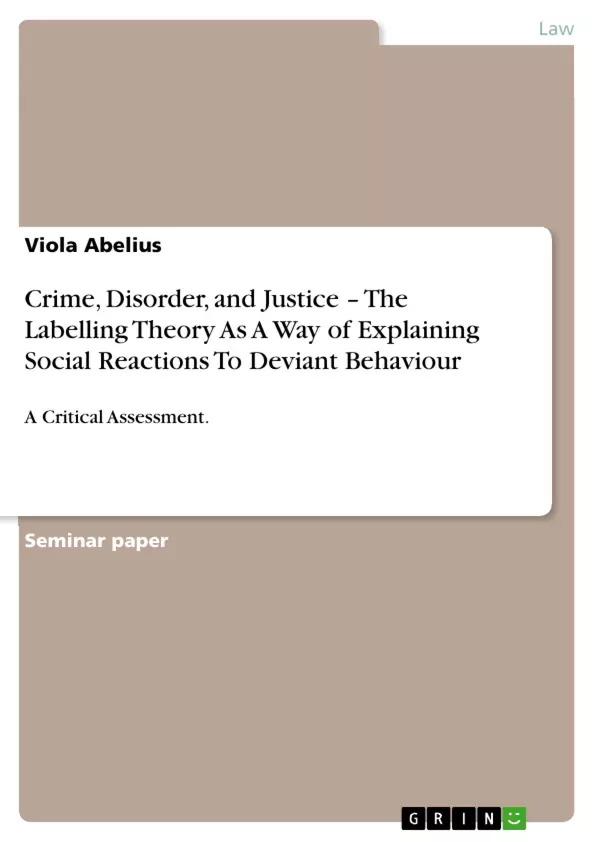In the 1960’s new deviance theories came up in sociology. One of them was the labelling theory, which offered new explanations of crime and deviant behaviour. This paper will critically assess to what extent the labelling theory can explain societal reactions to deviant behaviour and how these societal reactions work and influence deviant behaviour.
Table of Contents
- Introduction
- Labelling Theory and Deviant Behaviour
- Societal Reactions and the Labelling Process
- The Role of Media and Deviancy Amplification
- Primary and Secondary Deviance
- The Responsibility of Society
- Societal Reactions and Change Over Time
- Limitations of Labelling Theory
- Self-Revaluation and Segregation
- Labelling, Power and Control
- Conclusion
Objectives and Key Themes
This paper critically examines the labelling theory's ability to explain societal reactions to deviant behaviour and its influence on deviant behaviour. It explores the theory's key concepts, such as the creation of deviance through societal labelling, the role of the criminal justice system, and the concept of deviancy amplification.- The formation of deviant behaviour through societal reactions
- The impact of labelling on individual self-perception and behaviour
- The role of media and deviancy amplification in shaping public perceptions
- The limitations of the labelling theory in explaining deviant behaviour
- The power dynamics and control mechanisms inherent in the labelling process
Chapter Summaries
This section summarizes the main themes and arguments of the text, excluding any spoilers or content from the conclusion.- The introduction provides a general overview of the labelling theory and its application to explaining crime and deviant behaviour.
- The second section delves into the core principles of labelling theory, highlighting how societal reactions and labelling contribute to the creation of deviance.
- The third section explores the role of the criminal justice system in labelling individuals and its impact on the development of deviant or criminal behaviour.
- The fourth section focuses on the process of deviancy amplification, emphasizing the role of media in shaping public perceptions and contributing to the escalation of deviance.
- The fifth section examines the concept of primary and secondary deviance, highlighting the transition from initial deviant acts to the acceptance of a deviant identity.
- The sixth section explores the responsibility of society in providing opportunities for all its members, particularly those who are labelled as deviant.
- The seventh section considers the changing nature of societal reactions and the evolving definitions of deviance over time.
- The eighth section discusses the limitations of the labelling theory, acknowledging that other factors, such as environmental influences, also contribute to deviant behaviour.
- The ninth section analyzes the self-revaluation process that accompanies labelling, where individuals position themselves as superior to those labelled as deviant.
- The final section focuses on the power dynamics inherent in the labelling process, arguing that it represents a form of control and the imposition of rules by dominant groups.
Keywords
Labelling theory, deviant behaviour, crime, societal reactions, criminal justice system, deviancy amplification, primary and secondary deviance, social norms and values, power dynamics, control mechanisms, environmental factors, social context, media influence.
Final del extracto de 7 páginas
- subir
- Citar trabajo
- Viola Abelius (Autor), 2009, Crime, Disorder, and Justice – The Labelling Theory As A Way of Explaining Social Reactions To Deviant Behaviour, Múnich, GRIN Verlag, https://www.grin.com/document/180888
Leer eBook



